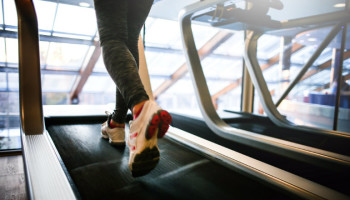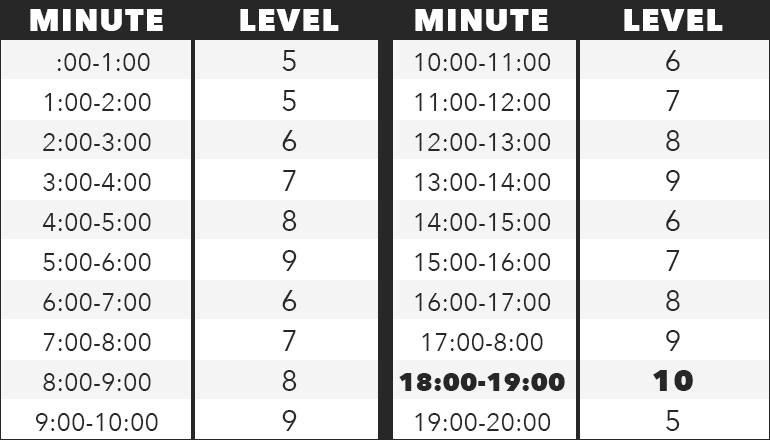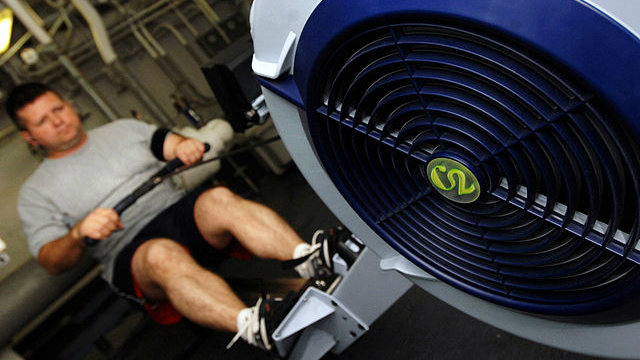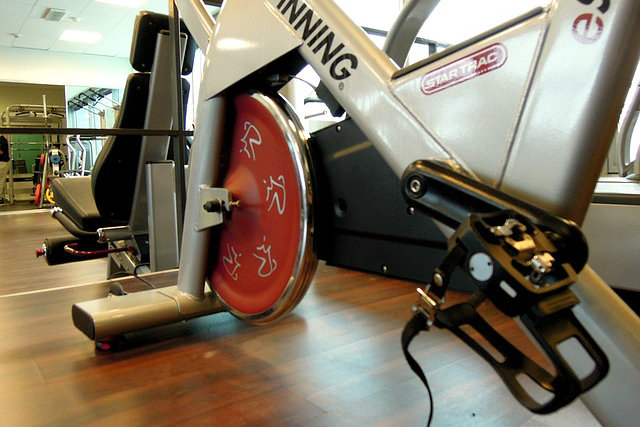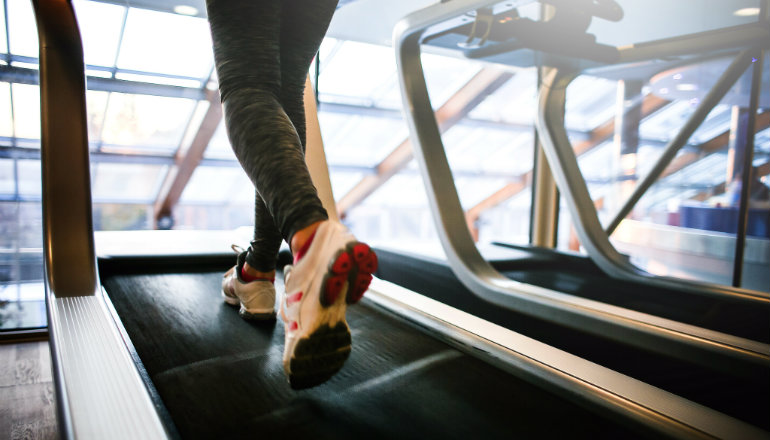 Reading Time: 6 minutes
Reading Time: 6 minutesThe idea of “cardio” has a bit of a stigma. Cardio, by definition, is currently out-of-style and because of the tough-guy mentality that pervades many of the training systems in today’s fitness industry, classic cardio for weight loss and conditioning has become taboo.
Well, I’m here to tell you, there’s a workout out there that not only keeps us old timers who love our cardio and our cardio machines happy, but will also give the “hard as nails” group something to chew on.
How I Discovered This Weight-Loss Workout
How many of you remember the Body-for-Life program? Bill Phillips created the system over 20 years ago. Within the program, perhaps the most impactful tool provided is the cardio plan, effectively named the 20-Minute Aerobics Solution. It’s an interval program that forces the user (if you choose to follow it exactly as written) to work at very intense levels that strip your frame of body fat. Not only that, it’s a fabulous conditioning builder and can radically influence some of the markers we look at for health.
I’m not allowed to make medical claims for you, so I will tell you what this workout has done for me. With an assertive diet change and this cardio routine, I dropped close to thirty pounds and reduced my blood pressure from 170/110 to 128/78 in one month. How do I know this? Because I had a bit of a cardiac incident in June followed by some stern conversations with my doctor, so I put myself to work. I monitored my vitals regularly for this month, and watched a daily shift occur in not only my body weight but also my blood pressure. It was quite amazing.
How Hard Am I Really Working?
How many of you have heard of the Borg Scale of Perceived Exertion? It’s a fancy way of measuring how hard you think you are working. Mysteriously, the Borg Scale starts at the number 6 and peaks out at 20 — 6 being next-to-no work and 20 meaning pedal to the metal, as hard as you can go.
The 20-Minute Aerobic Solution uses a similar scale, but sticks to something a little more familiar to all of us, the classic 1-10. Remember, this is going to be a measurement on how hard you think you are physically working — 1 being what I’m doing now (sitting and typing) to 10 where I’d be sprinting as hard as I can down the street. Here’s my advice on how you can visualize these levels:
- Level 1: Sitting
- Level 2: Slow walk
- Level 3: Walk
- Level 4: Brisk walk
- Level 5: Easy jog
- Level 6: Jog
- Level 7: Fast jog
- Level 8: Run
- Level 9: Hard run
- Level 10: Sprint
Like the program says in the name, we are only working for 20 minutes. What we need to understand is that these are going to be 20 very specific minutes. The protocol is based off our 1-10 and you need to stick to what is prescribed. The routine breaks down like this:
Where most people screw this up is they think the “level” prescription is the level setting on the machine they are using. Remember, “level” means how hard you feel you are working. You could set your machine to its resistance setting level 1 and go as hard as you can to equate to your level 10 (effort) or high point in the cardio plan. This program is about you being focused on how you are feeling, and then actually trying to increase your work output to match the prescribed levels.
What you will quickly find is that this is not easy. Most of us rarely work at all-out levels, so when you do this the first time, it takes some gauging. Don’t worry, you will get the hang of it quickly and will be able to adjust on the fly.
What You Eat Post-Workout Really Matters
It is recommended to do this fasted, first thing in the morning. You can have water, but the program’s effectiveness was determined when participants did it with an empty belly. Furthermore, it is recommended that you wait to eat for an hour after you have finished. I know waiting to eat can feel daunting, but if you want maximum efficiency, try to follow the guidelines. If you absolutely have to eat something soon after your session, eat a protein- and fat-dense meal or snack like some eggs or chicken breast.
The important thing is that you want to avoid consuming carbohydrates for the hour following your training session. Imagine you have two cups that are nearly full. One cup represents the total concentration of carbohydrates in the body (in the brain, the liver, muscles, etc.). The other cup is the representation of the total amount of fat you are carrying. In an ideal situation, we want to empty the fat cup as much as possible to achieve that lean, muscular body we all want.
Doing lower intensity, longer duration cardio appears on paper like the answer to our fitness wishes. That style of exercise bypasses the need for sugars (carbohydrates) and, in theory, our fat storage becomes our body’s primary fuel source. But hold on! Even with a well-balanced diet, if you are consuming carbs, the body goes through a system of checks and balances when deciding on its fuel source. The brain has enough sugar? Check. The liver has what it needs? Check. And if you’re doing low-intensity “fat burning” cardio, then your muscles still have a full dose of sugars waiting to be used.
With your carbohydrate cup full (your organs and tissues being topped off with carbs), any incoming carbohydrates can’t fit in the carb cup, so the excess carbs get stored in the fat cup. As a result, we end up in a cycle of slowly emptying the fat cup, followed by unintentionally refilling it with over-flowing carbs. So in the end, fat-burning workouts don’t really end up getting rid of much fat. You know those friends of yours who are dedicated to their exercise program yet their body never really changes? This is likely what you are seeing.
What higher intensity cardio does is address the carbohydrate cup. Imagine this. You do the workout outlined above, where due to the level of intensity our carbohydrate cup gets the biggest role in fueling the activity. You wait your hour, then have a sensible breakfast like some eggs, a banana, and some juice (a well rounded meal of carbs, proteins, and fats). Since you have lowered the carb cup with your exercise, that concentration of carbohydrates doesn’t overfill the cup.
Then, which is the most exciting piece to this, brushing your teeth, walking from place to place at work, talking on your phone (all of which are fat burning activities because of their relative low intensity) all begin to slowly chip away at the fat cup. Without the excess carbohydrate spillover, you get the chance reduce the fat concentration in the body in a more permanent way.
The Proof Is in the Pudding
Nearly every recommendation I give here on the Whole Life Challenge is something I have test driven on myself. I am a product of these things and even though, like you, I am still finding my way, there are a few things on which I firmly stand. This cardio program is one of them. It’s been a useful tool in my kit for over fifteen years.
If you follow the plan as it is written, you will get results. If you try it, post to the comments and let us know how it goes!
